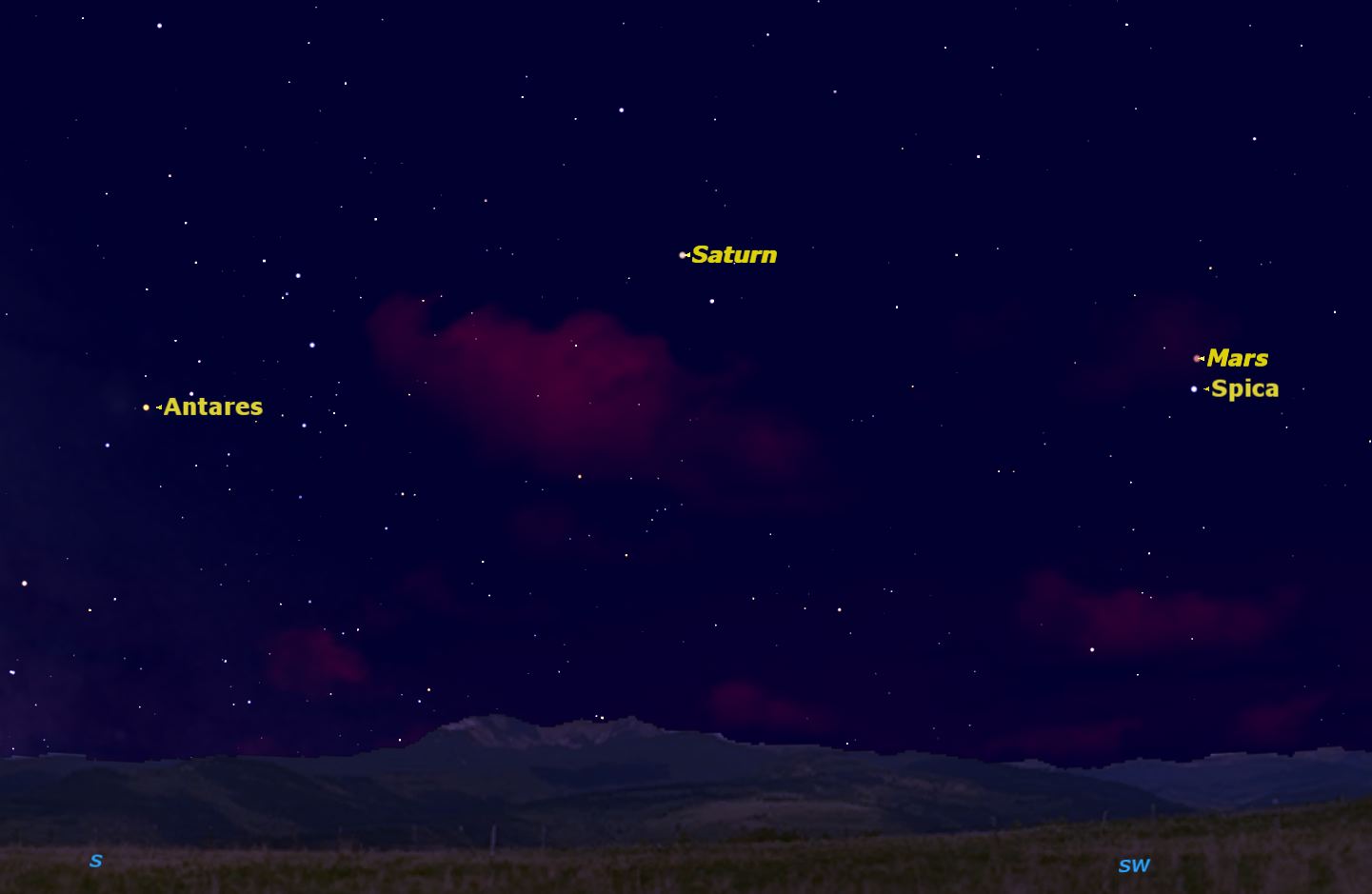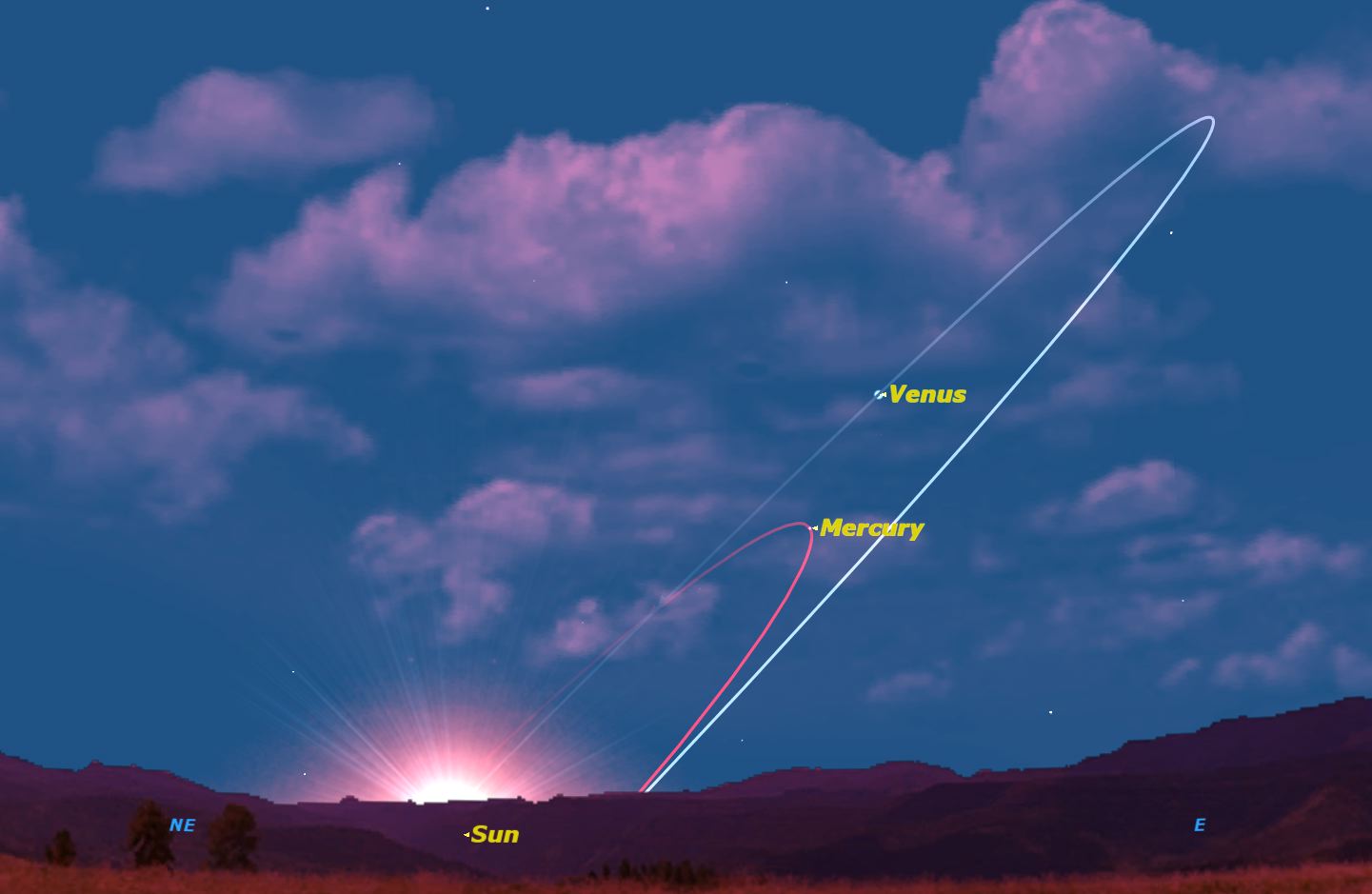 | |||||||||||||||||||||||||||||||||||||||||||||||
| For education orders please call 1-877-290-8256. Welcome to the July Second Week Featured Article! Mercury, Spica, and Mars, Oh My! Geoff Gaherty, Starry Night EducationThere are interesting events in the sky this week, at the beginning and end of the night. While both events reach their peak on Saturday night, they will be interesting to watch all week.  Just as twilight ends in the evening this week, the planet Mars and bright star Spica do a celestial dance. Antares and Saturn are nearby. Credit: Starry Night software. In the evening sky, just as dusk falls, look towards the western sky. The Sun has just set in the northwest, but at this time of year the ecliptic, the path that the Sun, Moon, and planets follow across the sky, is at a very shallow angle to the horizon, so the Moon and planets hang low in the southwestern sky.  Meanwhile, just before sunrise, shy Mercury puts in an appearance close to brilliant Venus. Credit: Starry Night software. Mars is now moving quite quickly from west to east (right to left in the northern hemisphere), though not quite as fast as the Sun. As a result, the Sun will slowly overtake Mars, which will be lost from sight for some months in mid-2015. Usually it’s hard to see the movements of the planets, but this week we have a fixed marker in the sky, Spica, the brightest star in the constellation Virgo. Watch over the next few nights as Mars moves noticeably from night to night closing in on Spica, passing it on Saturday, July 12, and then moving away. At their closest, less than two degrees will separate the two. Notice the remarkable color contrast between reddish Mars and blue-white Spica. Look over to the left, due south, for the red star Antares in Scorpius, so named because of its similarity in color to Mars. About half way in between, in Libra, you will see the planet Saturn. At the other end of the night, just before sunrise, we find two more planets, Mercury and Venus. Venus is hard to miss, since it is the third brightest object in the sky after the Sun and Moon. Though now it is moving towards the far side of the Sun, so is neither as bright nor as high in the sky as it was earlier this year. Mercury is usually very hard to spot, but this week it is very close to Venus, which makes it easy to spot. In the chart, I’ve added the orbital paths of the two planets, so that you can see what’s going on. You can see that Mercury is at the point in its orbit farthest from the Sun, called greatest elongation west because it is towards the western horizon. Venus was at its own greatest elongation west on March 22. In the three months since, it has continued to move around its orbit away from Earth to reach the point shown. Because its orbit is farther from the Sun, it moves much more slowly than Mercury, so Mercury will be long gone by the time Venus has moved closer to Mercury’s current position. Take this unusual opportunity to observe four planets at the beginning and end of these short summer nights. |
| ||||||||||||||||||||||||||||||||||||||||||||||
© 2016 Simulation Curriculum Corp. All Rights Reserved. |
|||||||||||||||||||||||||||||||||||||||||||||||
